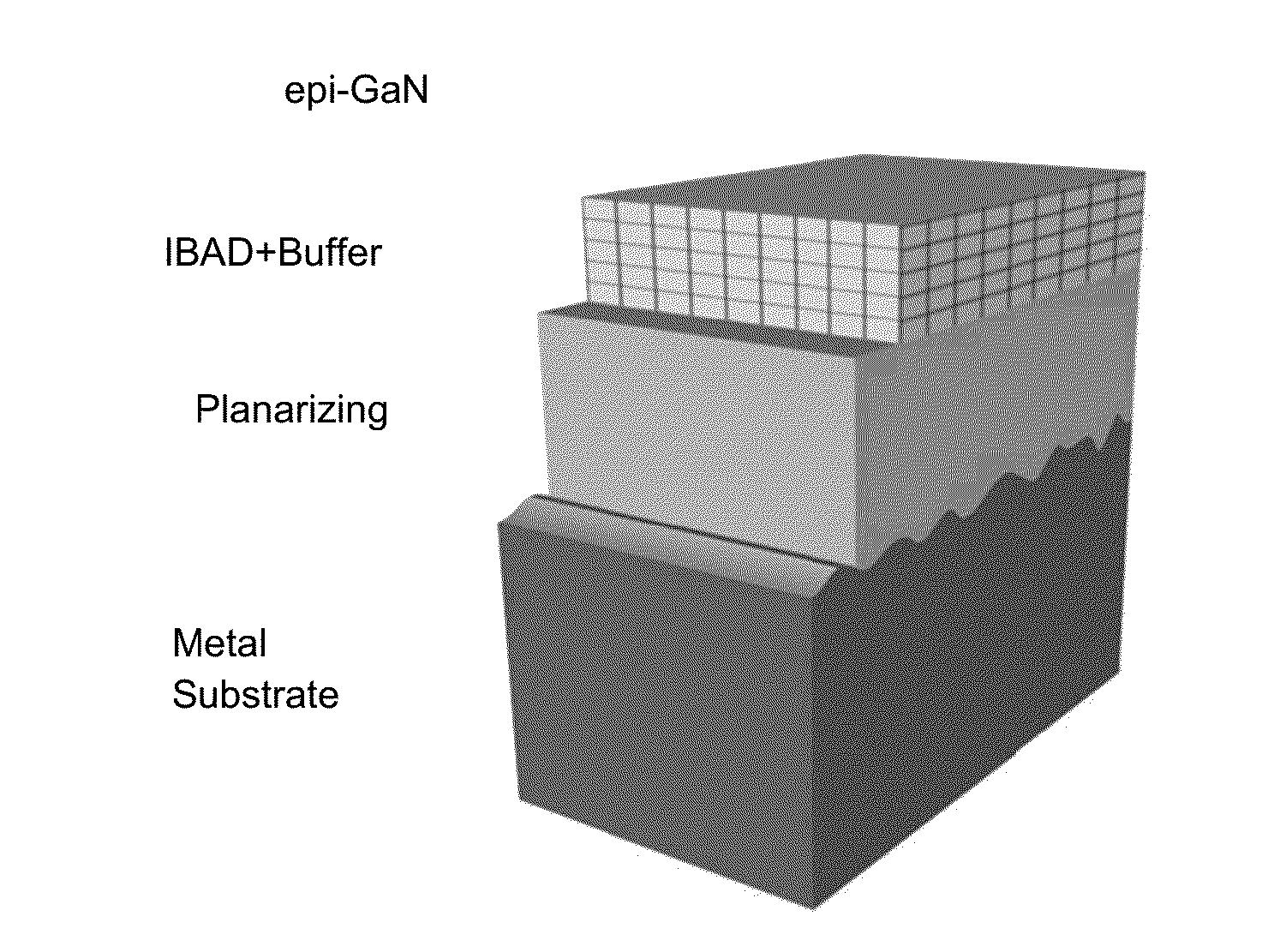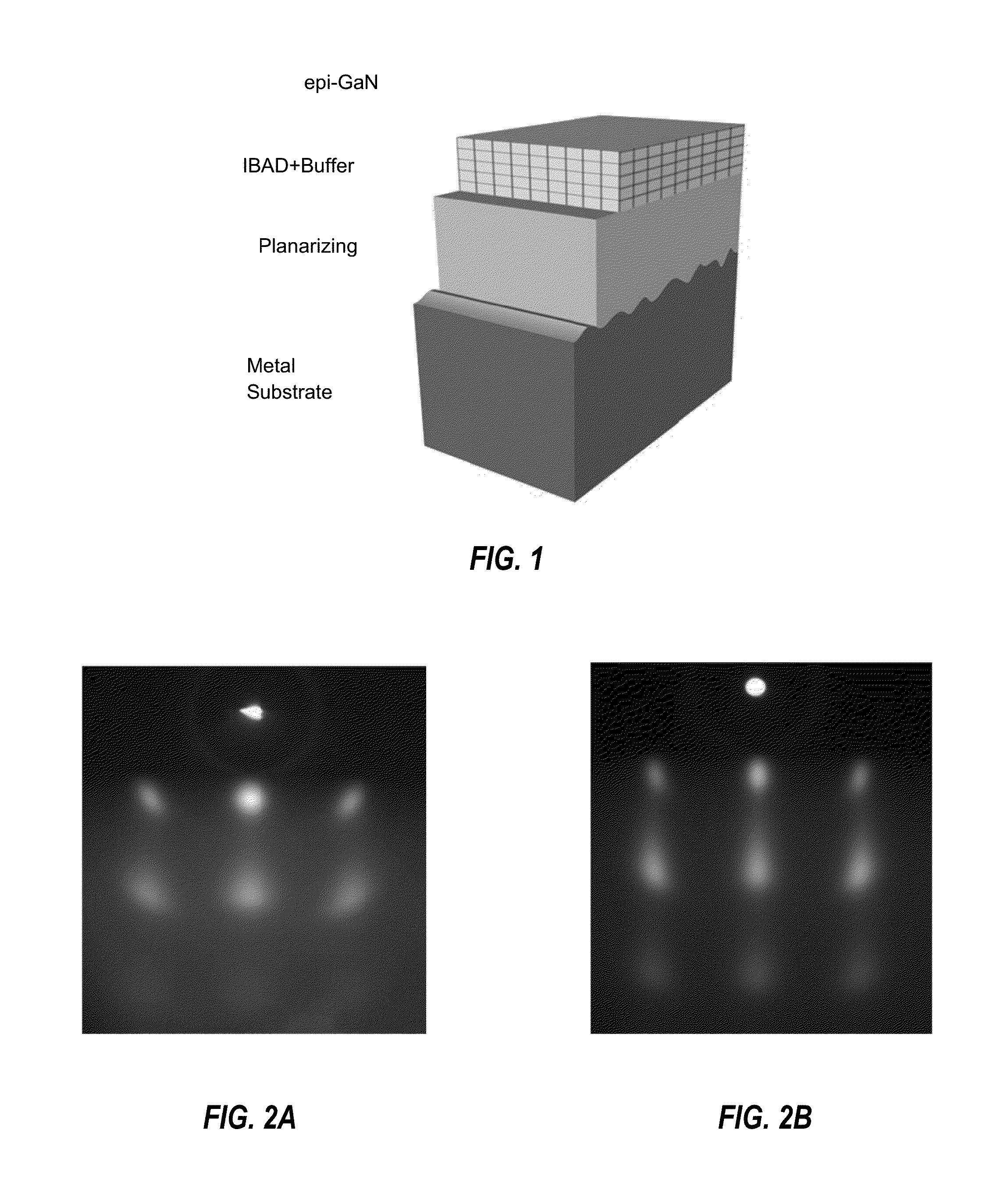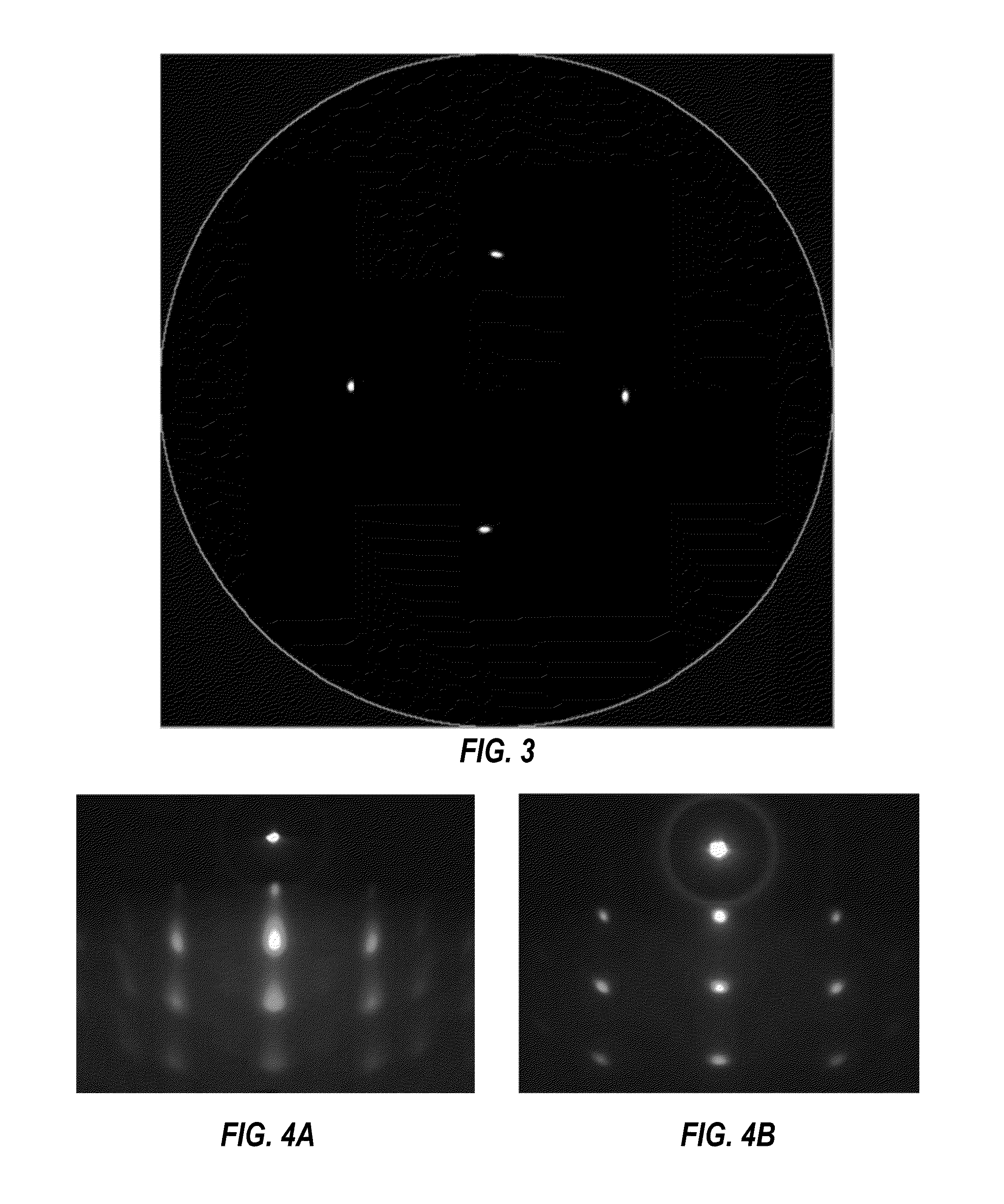Epitaxial Hexagonal Materials on IBAD-Textured Substrates
a hexagonal material and substrate technology, applied in semiconductor/solid-state device manufacturing, semiconductor devices, electrical equipment, etc., can solve the problems of cost of led luminaire systems, unable to completely replace incandescent and fluorescent lighting, and far from a mainstream application in commercial lighting
- Summary
- Abstract
- Description
- Claims
- Application Information
AI Technical Summary
Benefits of technology
Problems solved by technology
Method used
Image
Examples
example 1
[0061]To demonstrate the applicability of IBAD templates for epitaxial growth of GaN and related group III nitride materials, MOCVD growth of GaN, also known as MOVPE (metal-organic vapor phase epitaxy), was performed. Samples were briefly heated to 800-1000° C. in flowing H2 prior to growth. The GaN nucleation layer was grown using trimethylgallium (TMGa) and ammonia (NH3) using H2 and N2 push flows at a substrate temperature of 530° C. After the growth of the GaN NL, the TMGa was turned off and the wafers were ramped in temperature to 1050° C. over 8 minutes. At 1050° C. the TMGa was turned on for 1 hour resulting in ≦2 μm of GaN film. After growth the wafers were cooled in the NH3, H2, and N2 flows and removed from the growth reactor.
[0062]For the templates for GaN growth, substrates were prepared separately prior to GaN growth. In one embodiment we utilized IBAD-textured MgO films. These films are oriented with the (100) axis out of the plane and form a square, 4-fold symmetric ...
example 2
[0073]A thick layer of GaN was deposited on an IBAD template. Typically GaN is 4 to 6 micrometers in thickness, the top part of which is n-doped with Si, as can be seen in FIG. 25. As shown in FIG. 26, on top of the GaN layer an LED structure pn junction is grown, together with a multi-quantum well (MQW) structure, which is a multilayer of 5 alternating InGaN and GaN layers. On top of the MQW is p-doped electron blocking layer followed by the p-GaN doped with Mg. Such a heterostructure is standard for making LEDs in industry.
[0074]Performance of such an LED device was measured as compared to LEDs prepared on single-crystal sapphire, which is a standard substrate in industry. Results are shown in FIGS. 27-29. Comparisons were done with photoluminescence (PL) (shining a light on the device), and electroluminescence (EL) (passing a current through the device), light measurements. For the first devices fabricated PL shows between 10 and 40% of light in IBAD LEDs compared to standard sap...
PUM
| Property | Measurement | Unit |
|---|---|---|
| temperature | aaaaa | aaaaa |
| deposition time | aaaaa | aaaaa |
| roughness | aaaaa | aaaaa |
Abstract
Description
Claims
Application Information
 Login to View More
Login to View More - R&D
- Intellectual Property
- Life Sciences
- Materials
- Tech Scout
- Unparalleled Data Quality
- Higher Quality Content
- 60% Fewer Hallucinations
Browse by: Latest US Patents, China's latest patents, Technical Efficacy Thesaurus, Application Domain, Technology Topic, Popular Technical Reports.
© 2025 PatSnap. All rights reserved.Legal|Privacy policy|Modern Slavery Act Transparency Statement|Sitemap|About US| Contact US: help@patsnap.com



